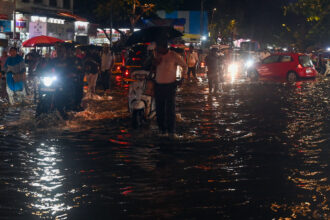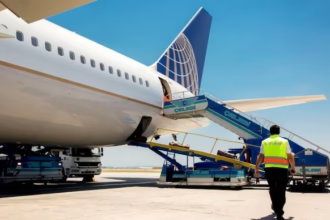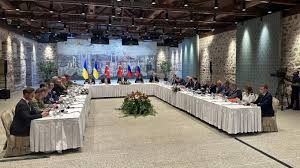Introduction: The Looming Security Crisis
Germany’s chief of defence, General Carsten Breuer, has issued a chilling warning: Russia may be preparing for an attack on NATO within the next four years. This declaration, made at the Shangri-La Dialogue in Singapore, underscores a growing urgency among Western nations to bolster military readiness. With the Russia NATO conflict intensifying, NATO must ramp up its defence infrastructure before 2029—or even sooner.
Russia’s Military Build-Up: A Strategic Threat

According to General Breuer, Russia is now producing up to 1,500 main battle tanks and four million rounds of 152mm artillery shells annually. These are not all being deployed to Ukraine; many are being stockpiled in western-facing structures. The Suwalki Gap—a vulnerable corridor between Poland and Lithuania—is considered a likely flashpoint.
- Tank production: 1,500 annually
- Artillery rounds: 4 million (2024)
- Key concern: NATO’s Baltic states
This massive military escalation by Russia poses a “very serious threat” to Europe, Breuer emphasized—one not seen in his 40-year career. NATO, he said, must be ready to “fight tonight.”
NATO’s Readiness and Unity
Despite tensions with Hungary and Slovakia—countries with closer ties to Moscow—General Breuer claims that NATO remains unified. Finland and Sweden’s swift accession to the alliance post-Ukraine war showcases growing cohesion. “The urgency is seen,” Breuer stated, referring to shared NATO recognition of the threat from Moscow.
Why 2029 Is a Critical Deadline
Analysts suggest that by 2029, Russia could possess the logistical and military capability to strike a NATO member. Such a scenario would trigger Article 5 of the NATO treaty, drawing all member nations into war. Breuer warns, however, that the threat could materialize earlier than 2029. “There’s no guarantee,” he admitted.
Implications for Europe’s Military Future
In light of these developments, European nations are reassessing military spending. Germany, for instance, is reversing decades of defence cuts, with even traditionally pacifist parties like the Greens supporting budget increases.
Yet questions remain: Can Europe’s military-industrial base scale fast enough to match Russian production? With the U.S. pivoting toward the Indo-Pacific, Europe must shoulder more responsibility for its own defence.

Cyber and Infrastructure Threats on the Rise
General Breuer also referenced cyberattacks and sabotage as parts of Russia’s broader strategy. Recent attacks on Baltic undersea cables and unidentified drones over German power facilities exemplify this hybrid warfare model. NATO must therefore strengthen both physical and digital defences.
Conclusion: The Path Forward
The German defence chief’s stark warning should act as a wake-up call. The West can no longer afford to downplay the scale of the Russian threat. Immediate investment in deterrence, strategic stockpiles, and alliance cohesion are essential. NATO must not only be ready by 2029—but possibly much earlier.
Actionable Insight: Citizens, lawmakers, and defence planners must prioritize NATO defence readiness now, as peace cannot be taken for granted in this rapidly changing geopolitical landscape.
For further insights, read our related post: How Sweden and Finland Strengthened NATO.









